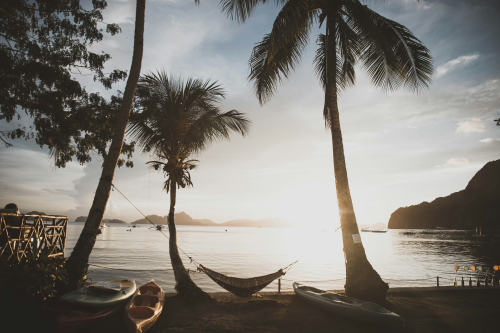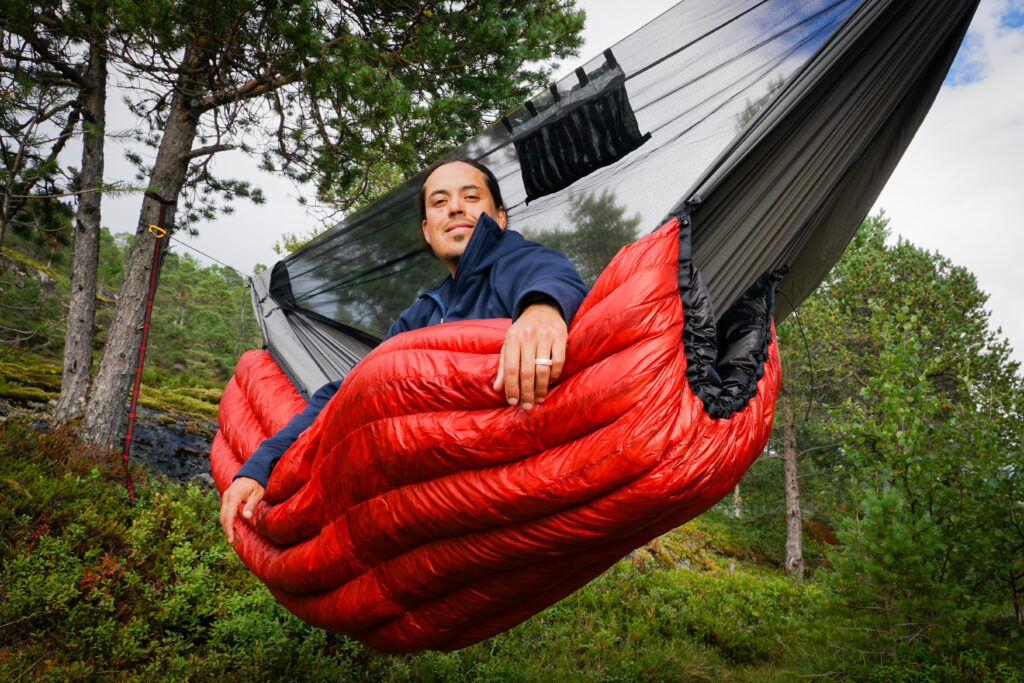Hammock Bliss: Essential Tips and Tricks for Ultimate Comfort

Hammock camping can be an excellent choice for cold-weather adventures, offering several advantages over traditional ground camping. Unlike tents, hammocks keep you elevated and away from the snow and cold ground, allowing you to retain more of your body heat. Additionally, the enclosed nature of a hammock setup with an underquilt and top quilt can provide superior insulation compared to a sleeping bag on the ground.
This article will explore the key considerations and gear needed to stay warm and comfortable when hammock camping in the winter. We’ll cover essential tips for selecting the right location, packing the necessary equipment, and employing smart camping techniques to ensure a safe and enjoyable cold-weather hammock experience.
Benefits of Winter Hammock Camping
Hammock camping offers several benefits that make it well-suited for cold-weather adventures:
- Elevated position keeps you away from snow and cold ground, retaining more body heat
- Enclosed hammock setup with underquilt and top quilt provides superior insulation compared to ground camping
- Hammocks are more comfortable and allow for better sleep than a tent on uneven, frozen ground
- Hammocks are lightweight and packable, making them ideal for backcountry winter adventures
By understanding the unique challenges of winter hammock camping and equipping yourself with the right gear, you can enjoy the comfort and convenience of hammock camping even in the coldest months.
Choosing the Right Hammock for Winter Camping
When it comes to winter hammock camping, selecting the right hammock is crucial for a comfortable and safe experience. Here are some key considerations to keep in mind:
Traditional hammocks are designed for relaxation and leisure, while camping hammocks are specifically designed for outdoor adventures. Camping hammocks are built to withstand harsh weather conditions and provide better insulation and protection from the elements.
When choosing a hammock for winter camping, look for one that provides sufficient thermal insulation. This can be achieved through the use of underquilts, top quilts, and thermal mats. Additionally, ensure the hammock is made from durable materials that can withstand cold temperatures and harsh weather conditions.
Essential Features to Look For
When selecting a hammock, consider the material durability and weight capacity. Look for hammocks made from strong, lightweight materials that can handle the weight of your gear and withstand harsh weather conditions.
Integrated bug nets and rainflies can provide additional protection from insects and rain. These features can enhance your overall camping experience and ensure you stay comfortable and dry.
Tips for Selecting the Best Hammock for Your Needs
Read reviews and user experiences to get a better understanding of how a hammock performs in different weather conditions. This can help you make an informed decision about which hammock to choose.
Consider the climate and terrain of your camping location when selecting a hammock. For example, if you’ll be camping in an area with heavy snowfall, look for a hammock with a high weight capacity to handle the weight of snow.
By considering these factors, you can find the perfect hammock for your winter camping needs and ensure a safe and enjoyable experience.
Preparing Your Gear for Winter Hammock Camping
When it comes to insulation, both underquilts and sleeping pads are crucial for maintaining warmth in your hammock. Underquilts hang beneath your hammock, providing insulation from the cold air below, while sleeping pads add extra insulation and cushioning inside the hammock. Choose the right material for your underquilt, such as down-filled or synthetic, and ensure it fits your hammock properly to prevent cold drafts. Sleeping pads can also be used in conjunction with underquilts for added warmth and comfort.
In addition to underquilts and sleeping pads, blankets and sleeping bags can provide extra warmth. Use a sleeping bag liner to add insulation to your sleeping bag, and consider a wool blanket for added warmth. These layers can be adjusted to suit your body temperature needs, ensuring a comfortable night’s sleep.
Setting Up a Tarp or Rainfly
When setting up a tarp or rainfly, ensure it covers your hammock completely and is staked down tightly to prevent flapping and heat loss. Position the tarp at a low angle to shield against wind and snow while still allowing for adequate airflow to prevent condensation.
Secure your tarp or rainfly against wind and precipitation by using sturdy stakes and guy lines. This will prevent the tarp from flapping in the wind and ensure it remains in place even in heavy rain or snow.
Additional Gear Considerations
In winter, sunlight is scarce, and darkness falls quickly. Bring extra lighting, such as a lantern, to ensure you can see what you’re doing at night. This is especially important for cooking and navigating in the dark.
When cooking in cold weather, use insulated cooking gear and a portable stove to minimize heat loss. Store food in insulated containers to keep it from freezing and ensure it remains accessible during your trip.
By following these tips, you can ensure your gear is prepared for the challenges of winter hammock camping, keeping you warm and comfortable throughout your adventure.
Setting Up Your Campsite for Winter Hammock Camping
When setting up your campsite for winter hammock camping, it is crucial to find a location that provides shelter from the wind and cold. Look for areas with natural windbreaks such as trees, rock formations, or hills. These features can significantly reduce the impact of strong winds and help maintain a more comfortable camping environment.
Ensure you are at a safe distance from water sources and potential hazards such as steep slopes, avalanche-prone zones, and frozen bodies of water. This will help minimize the risks associated with winter camping and ensure a safe and enjoyable experience.
Proper Hammock Setup
Adjust your hammock suspension and tension to ensure a comfortable and level sleep surface. This is especially important in winter when the cold can cause hammocks to sag or lose their shape.
Ensure your hammock is set up on a level surface to prevent discomfort and potential injuries. Use a tarp or rainfly to provide additional protection from wind and precipitation.
Safety Precautions
When camping in cold weather, it is essential to take precautions to avoid cold injuries. Stay hydrated and eat plenty of calories to maintain body heat. Use warm clothing and layers to keep yourself insulated, and avoid prolonged exposure to cold temperatures.
Remember to follow Leave No Trace principles and environmental considerations when camping in winter. This includes packing out human waste and toilet paper, staying on deep snow cover, and respecting wildlife habitats. Additionally, ensure you are aware of local regulations and permits for camping in the area you are visiting.
By following these tips, you can set up a safe and comfortable campsite for your winter hammock camping adventure, ensuring a memorable and enjoyable experience in the snow.
Tips for Enjoying Your Winter Hammock Camping Experience
To stay warm throughout the night, consider bringing along heat packs or a hot water bottle. Placing a heat pack or a bottle filled with hot water at the foot of your hammock can provide a cozy source of warmth as you sleep. Just be sure to properly insulate the heat source to prevent burns.
In addition to heat sources, employ other techniques to maintain warmth in your hammock. Wear layers of insulating clothing, use a warm hat and gloves, and ensure your underquilt and top quilt are properly adjusted to minimize heat loss.
Embracing the Winter Environment
Winter hammock camping offers unique experiences that you can’t find in other seasons. Enjoy activities like snowshoeing, cross-country skiing, or building snow shelters around your hammock setup. These activities can add an extra layer of adventure to your trip.
The winter landscape can be breathtakingly beautiful, with snow-covered trees, frozen lakes, and stunning sunrises and sunsets. Bring your camera and capture the magic of your winter hammock camping experience to share with others.
After each winter hammock camping trip, take time to reflect on what worked well and what could be improved. Use this knowledge to fine-tune your gear and techniques for your next adventure, ensuring you’re better prepared to handle the challenges of cold-weather camping.
Consider how the winter conditions and terrain of your camping location may vary, and adjust your gear and plans accordingly. Research the local weather patterns, snowfall, and potential hazards to ensure you’re ready for whatever Mother Nature has in store.
By following these tips, you can make the most of your winter hammock camping experience, staying warm, embracing the unique winter environment, and continuously improving your skills for future trips.
You may also be interested in: Camping Hammock Cover | Zip-In Hammock Winter Cover
Embark on your next adventure with Hammock Gear’s custom quilts! Tailor your comfort for the wild – choose your style, warmth, and size to craft your perfect eco-friendly outdoor companion, or grab a complete ultralight kit. Made in the USA for unparalleled quality and comfort. Trusted since 2009. Shop Now and tap into a community of nature lovers!⭐
Related Posts
The Best Camping Hammocks of 2024 – A Buyer’s Guide by Hammock Gear
A good camping hammock can completely transform how you experience…
Can Napping Hurt You? Unveiling the Pros & Cons of Daily Zzz’s
Napping, the act of taking a brief sleep during the…


